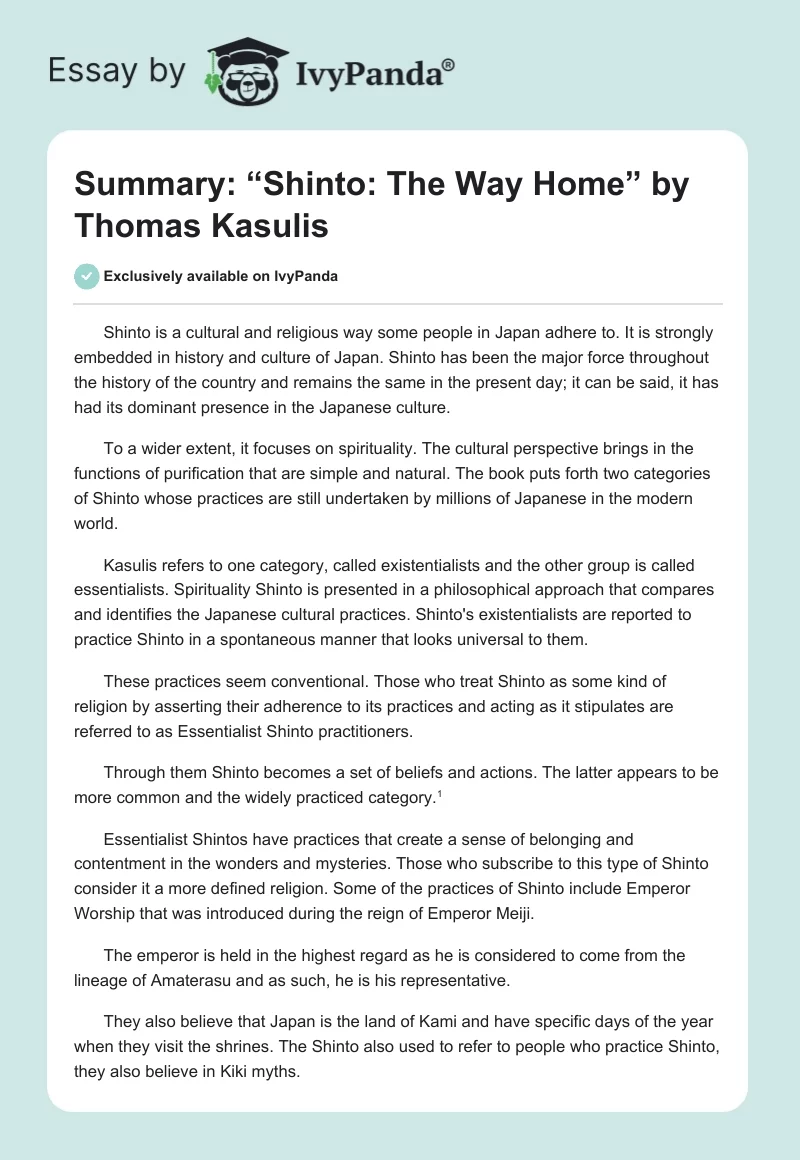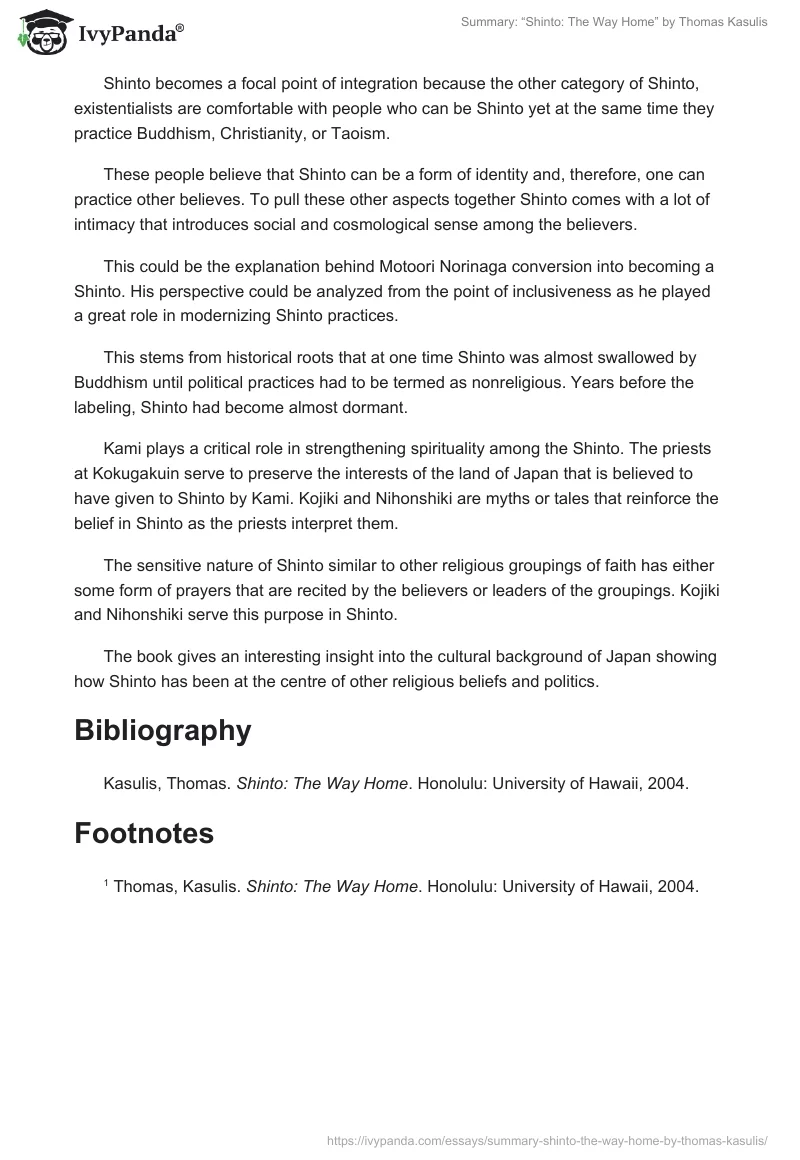Shinto is a cultural and religious way some people in Japan adhere to. It is strongly embedded in history and culture of Japan. Shinto has been the major force throughout the history of the country and remains the same in the present day; it can be said, it has had its dominant presence in the Japanese culture.
To a wider extent, it focuses on spirituality. The cultural perspective brings in the functions of purification that are simple and natural. The book puts forth two categories of Shinto whose practices are still undertaken by millions of Japanese in the modern world.
Kasulis refers to one category, called existentialists and the other group is called essentialists. Spirituality Shinto is presented in a philosophical approach that compares and identifies the Japanese cultural practices. Shinto’s existentialists are reported to practice Shinto in a spontaneous manner that looks universal to them.
These practices seem conventional. Those who treat Shinto as some kind of religion by asserting their adherence to its practices and acting as it stipulates are referred to as Essentialist Shinto practitioners. Through them Shinto becomes a set of beliefs and actions. The latter appears to be more common and the widely practiced category.
Essentialist Shintos have practices that create a sense of belonging and contentment in the wonders and mysteries. Those who subscribe to this type of Shinto consider it a more defined religion. Some of the practices of Shinto include Emperor Worship that was introduced during the reign of Emperor Meiji.
The emperor is held in the highest regard as he is considered to come from the lineage of Amaterasu and as such, he is his representative. They also believe that Japan is the land of Kami and have specific days of the year when they visit the shrines. The Shinto also used to refer to people who practice Shinto, they also believe in Kiki myths.
Shinto becomes a focal point of integration because the other category of Shinto, existentialists are comfortable with people who can be Shinto yet at the same time they practice Buddhism, Christianity, or Taoism.
These people believe that Shinto can be a form of identity and, therefore, one can practice other believes. To pull these other aspects together Shinto comes with a lot of intimacy that introduces social and cosmological sense among the believers.
This could be the explanation behind Motoori Norinaga conversion into becoming a Shinto. His perspective could be analyzed from the point of inclusiveness as he played a great role in modernizing Shinto practices. This stems from historical roots that at one time Shinto was almost swallowed by Buddhism until political practices had to be termed as nonreligious. Years before the labeling, Shinto had become almost dormant.
Kami plays a critical role in strengthening spirituality among the Shinto. The priests at Kokugakuin serve to preserve the interests of the land of Japan that is believed to have given to Shinto by Kami. Kojiki and Nihonshiki are myths or tales that reinforce the belief in Shinto as the priests interpret them.
The sensitive nature of Shinto similar to other religious groupings of faith has either some form of prayers that are recited by the believers or leaders of the groupings. Kojiki and Nihonshiki serve this purpose in Shinto.
The book gives an interesting insight into the cultural background of Japan showing how Shinto has been at the center of other religious beliefs and politics.
Bibliography
Kasulis, Thomas. Shinto: The Way Home. Honolulu: University of Hawaii, 2004.


